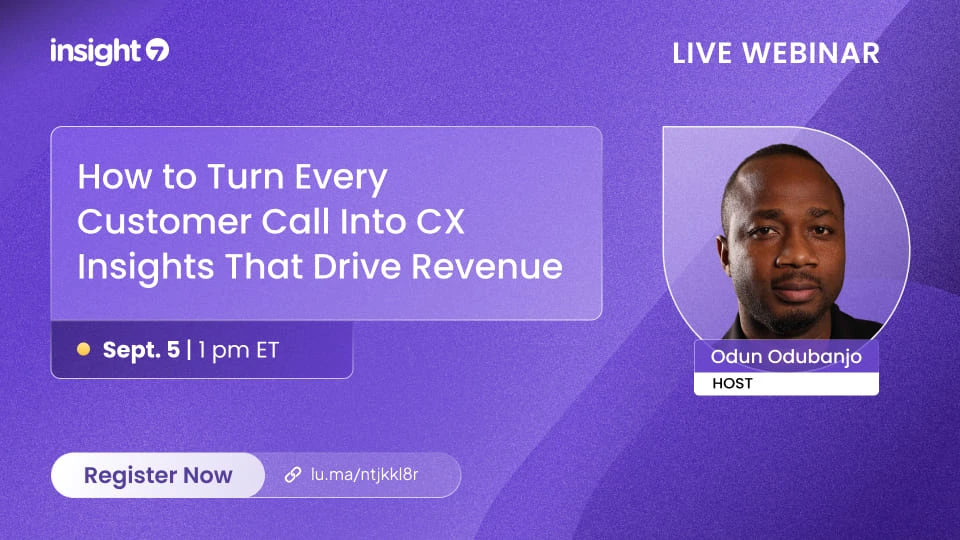How to Analyze Customer Meetings
-
Bella Williams
- 10 min read
Customer Meeting Analysis is essential for understanding client needs and enhancing service delivery. By examining the dynamics of customer interactions, organizations can shift from merely providing solutions to adopting a more consultative approach. This transition not only builds stronger relationships but also allows teams to respond better to market demands.
In this section, we will explore the significance of evaluating customer meetings. Understanding how to analyze these interactions can illuminate patterns and preferences, driving business decisions and refining strategies. The goal is to equip you with valuable insights that result in more effective engagement and improved customer satisfaction in future conversations.
Generate visualizations from your qualitative data. At Scale.

Understanding the Importance of Customer Meeting Analysis
Customer Meeting Analysis plays a crucial role in understanding customer needs and expectations. It allows organizations to transition from a transactional to a consultative approach, fostering deeper connections. By examining conversations, businesses can identify key patterns in customer behavior, enabling them to tailor their offerings accordingly.
Understanding the significance of this analysis lies in its capacity to provide actionable insights. It empowers teams to refine their sales strategies, enhance customer engagement, and optimize training practices. Additionally, consistent analysis helps in keeping the offerings aligned with market demands. Organizations that prioritize customer meeting analysis not only improve their service but also cultivate long-lasting customer relationships, ultimately driving growth and success. Embracing this practice is essential for staying competitive in today's dynamic marketplace.
Identifying Objectives in Customer Meetings for Analysis
Identifying objectives in customer meetings for analysis is crucial to extracting meaningful insights. When engaging with clients, it is essential to clarify what you aim to achieve from each interaction. This includes understanding their needs, challenges, and feedback, which can guide future interactions and product development. By honing in on specific goals, you can create a more focused discussion that yields valuable data for analysis.
Begin by recognizing the primary objectives before the meeting. These might include gathering customer preferences, exploring pain points, or assessing satisfaction with the current solutions. Each of these aims can significantly influence your analysis approach. Following the meeting, review your notes and responses to ensure the objectives were met, and determine how successfully you gathered the necessary information. This structured focus not only enhances the quality of your customer meeting analysis but also fosters deeper relationships with clients.
Gathering Key Data during Customer Meetings
During customer meetings, gathering key data is essential for a comprehensive customer meeting analysis. This process involves actively listening to customer feedback, understanding their needs, and asking clarifying questions to delve deeper. For example, instead of solely focusing on selling a product, adopt a consultative approach. Ask questions like, "Why did you choose this product?" or "What goals are you trying to achieve?" These inquiries can reveal valuable insights that inform better decision-making.
It’s beneficial to structure the data collection into specific categories to facilitate analysis. First, capture general impressions and sentiments about your offerings. Next, focus on gathering detailed feedback on specific products or services. Finally, make notes on any recurring themes or issues mentioned by customers. By systematically organizing this information, you can derive actionable insights that enhance both your product offerings and customer relationships. This thoughtful approach to gathering key data ultimately leads to more effective customer engagement and improved outcomes.
Evaluate Performance on Customer Calls for Quality Assurance.
Steps to Conduct Effective Customer Meeting Analysis
To conduct effective customer meeting analysis, it is essential to follow a structured approach. First, ensure all meeting notes are organized and easily accessible. Proper organization allows for a thorough review of important topics discussed, which helps in identifying key moments that require attention or follow-up. This initial step lays the groundwork for understanding customer sentiment and gathering valuable insights.
Next, focus on analyzing customer feedback received during meetings. Collect direct quotes and summarize suggestions or concerns raised by the customers. This process highlights critical areas where there may be opportunities for improvement. Finally, derive actionable items from the insights gained. Develop a plan that addresses these areas, prioritizing tasks based on urgency and impact. By implementing these steps, you can enhance the effectiveness of future customer interactions and ultimately improve customer satisfaction.
Step 1: Organizing and Reviewing Meeting Notes
Organizing and reviewing meeting notes is a crucial first step in effective customer meeting analysis. After a meeting concludes, take time to compile and structure your notes systematically. This process helps distill key points and action items, ensuring that no critical information is overlooked. A well-organized set of notes serves as a reference guide for future discussions and decision-making. The objective is to create clarity out of potentially overwhelming details, making it easier to extract valuable insights.
Next, review these notes to identify themes and trends that emerged during the conversation. Look for customer concerns, suggestions, or any expressed needs that can guide your analysis. This can range from product feedback to requests for follow-up actions. By systematically organizing and reviewing your notes in this way, you set a solid foundation for deeper analysis, allowing you to focus on developing actionable steps based on customer interactions.
Step 2: Analyzing Customer Feedback and Input
Analyzing customer feedback and input is crucial for enhancing the outcomes of customer meetings. Start by collecting all relevant feedback from participants, which often includes comments, questions, and suggestions. This feedback acts as a rich source of qualitative data that can highlight customer sentiments, uncover pain points, and identify areas of improvement. By organizing this feedback into categories, teams can better understand trends, whether positive or negative, within the customer interactions.
Next, analyze this data thoroughly. Look for recurring themes and significant insights that may guide product or service development. Implementing tools for data visualization can facilitate this process, allowing teams to see patterns and correlations that may not be obvious at first glance. The goal is to transform customer feedback into actionable insights, thereby improving customer relationships and driving overall business success. This step is vital in creating a responsive and customer-centric organization.
Step 3: Deriving Insights and Developing Actionable Items
To derive valuable insights from customer meeting analysis, focus on identifying key themes and trends that emerge from discussions. Begin by synthesizing the information gathered during the meeting, such as customer feedback, pain points, and suggestions. Use this data to categorize insights, enabling a clearer understanding of customer needs and preferences. By clearly outlining these insights, businesses can effectively pinpoint areas that require improvement or innovation.
Next, translate these insights into actionable items. This involves brainstorming concrete steps that can be taken to address identified issues. Develop specific actions linked to each insight, ensuring they are realistic and measurable. By establishing timelines and assigning responsibilities, teams can transform insights from analysis into meaningful changes that enhance customer experiences. Continuous evaluation of these actions will ensure that they remain relevant and effective in meeting evolving customer expectations.
Conclusion on Effective Customer Meeting Analysis
Analyzing customer meetings is a vital practice that enhances interactions and builds stronger relationships. By focusing on clear objectives, gathering significant data, and evaluating performance based on established criteria, organizations can ensure that each meeting leads to meaningful outcomes. Understanding customer needs and expectations becomes easier by implementing structured analysis techniques.
In conclusion, effective customer meeting analysis not only improves immediate communication but also contributes to long-term success. It allows businesses to adapt their strategies, refine their approaches, and ultimately deliver more value to their customers. As a result, investing time in this analysis is crucial for sustainable growth and customer satisfaction.







